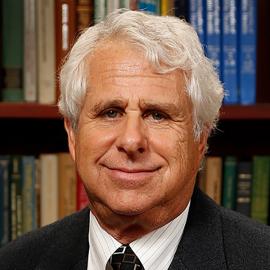
The Commonwealth Fund’s Reginald D. Williams II, vice president of the International Health Policy and Practice Innovations program, spoke to Thomas Rice, professor at the UCLA Fielding School of Public Health, about his new book, which looks at various countries’ approaches to adopting universal health coverage and the mechanics of different health care systems.
Reginald D. Williams II: What is the value in comparing health policy and practice in the United States to other countries, or in comparing any countries?
Thomas Rice: For a health policy researcher, the world is like a laboratory! All countries face challenges in securing access to high-quality, affordable health care, but each has tackled them differently. The book focuses on health insurance systems in 10 countries and ultimately concludes that there is not a single “best” approach. The single-payer National Health Service in the U.K., the all-payer system that relegates government to the back seat in Germany, the pro-competition approach in the Netherlands that is most like the private insurance system in the U.S. — all are highly successful.
Williams: The U.S. is the only high-income country without universal health care coverage. Why is that? When you examined how the U.S. differs from other countries, what did you learn that we don’t already know?
Rice: I took a deep dive into the international literature. Not only comparing the U.S. to other countries, but also examining each of the 10 countries — Australia, Canada, France, Germany, Japan, the Netherlands, Sweden, Switzerland, the U.K., and the U.S. — in detail. I relied on data from the Commonwealth Fund and from international agencies like OECD, Eurostat, and the World Bank. These are some highlights from my research:
- There are different ways to achieve a high-functioning health care system, but all involve far more regulation of health care supply and prices than we have been willing to do in the U.S.
- All other countries view health care access as a right; we do not.
- While private insurance is common in many public health care systems, for-profit insurers are rarely allowed, except in secondary, supplemental health plans that a portion of the population purchases in addition to the primary coverage.
- Spending is kept in check by controlling prices of medicines and provider fees and using comparative effectiveness measures to decide which benefits are covered.
- Costs are not a barrier to obtaining care in these other countries, with the exception of Switzerland.
- The most equitable systems cover a broad set of benefits, have low cost-sharing requirements, and do not rely on secondary, supplemental insurance to any large extent.
- Patient cost sharing for covered services exists everywhere. No country provides “free” prescription drugs, and all except Canada and the U.K. require cost sharing for hospital or physician services, except for specifically exempted groups like children. Deductibles are less common, except for drugs; in countries that do employ them for hospital and physician services (like the Netherlands and Switzerland), they are much lower than in the U.S.
- Waiting lists are longer in the single-payer countries — Australia, Canada, Sweden, and the U.K. — compared to those that rely on private insurance, like Germany, the Netherlands, or Switzerland. The single-payer systems are largely funded through taxes that are not earmarked to health care, meaning that the health care needs of the population must compete against other government priorities.
Williams: President Biden promised a “public option” (that is, a government-run health insurance plan) during his campaign. This may be an important step to achieving universal coverage, but there are important design choices. What have you learned about eligibility, benefits, ensuring access to providers, and controlling prices?
Rice: A public option needs to ensure that nearly everyone that it intends to cover enrolls. In most other countries, all citizens are automatically enrolled. In Germany, the Netherlands, and Switzerland, where insurers compete with each other (like in the U.S.), an individual mandate is strictly enforced, with the Dutch going so far as garnishing wages. Universal coverage is necessary to reduce adverse selection and avoid a parallel safety-net care system.
Benefit packages vary considerably. Three countries (Germany, Japan, and the U.K.) cover dental care; all but Canada cover prescription drugs for adults. Long-term-care coverage varies considerably. In devising the benefits package for a public option, we have to decide the set of benefits we believe is both necessary and affordable.
All other countries I studied — even those with dozens of competing insurers – require that all insurers pay providers the same amount. This is critical. It controls unit prices and total expenditures, and it means that each patient is equally remunerative to providers regardless of their insurance. This is a far cry from the U.S., where Medicaid patients are far less lucrative than others. In some countries, people who buy supplementary private insurance have an advantage because these insurers pay more than the public plan. In Australia, the half of citizens without such coverage wait more than twice as long to receive some elective surgery and specialty care. A contentious issue facing the U.S. is deciding if we can limit how much private insurers pay. If not, how much less will the public option pay? Not only does this raise legal issues, but it has potentially huge implications for putting together an attractive provider panel under the public option and the savings that would result.
Williams: What have you learned about strategies to ensure affordability and equity?
Rice: Affordability and equity are issues in many of the countries, but nowhere do they present as much of a barrier to seeking care as in the U.S. This was strikingly clear from the Commonwealth Fund’s international survey in 2020, which found that half of lower-income Americans skipped needed care in the past year because of costs. No other country exceeded 30 percent. There are several reasons why other countries do a better job at protecting the most economically vulnerable: 1) everyone is covered with no need to certify their income; 2) with few exceptions, deductibles are either much lower than in the U.S. or do not exist; 3) lower-income individuals receive extra subsidies or are excluded from cost-sharing requirements; and 4) there are strict out-of-pocket maximums that tend to be far lower than those in the U.S. In the ACA marketplaces, individual annual limits are more than $8,500 and family limits are more than $17,000. There are lower limits, of course, for lower-income Americans and people on Medicaid.
Williams: What is the single greatest insight from your review of international approaches that can inform the U.S.?
Rice: It’s not one-size-fits-all. The U.S. will ultimately pick the approaches that work with our population preferences and political realities. A key lesson of the ACA is that substantial reform and universal coverage are within our grasp. Other countries use strategies like government market power to control unit prices, comparative effectiveness to determine which services should be prioritized, and autoenrollment to guarantee that people are covered. We have the tools and the roadmap to do this.




